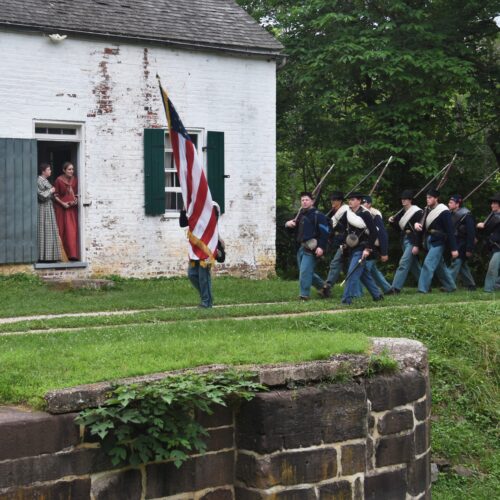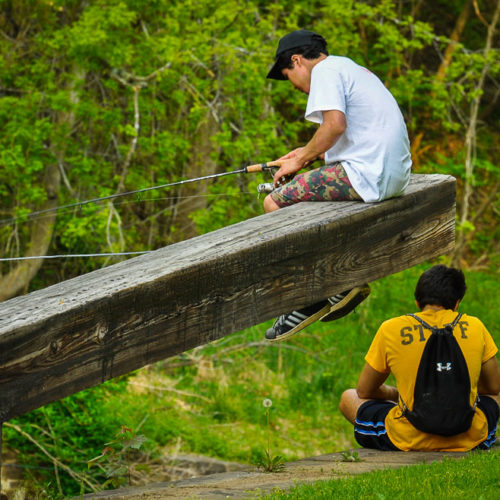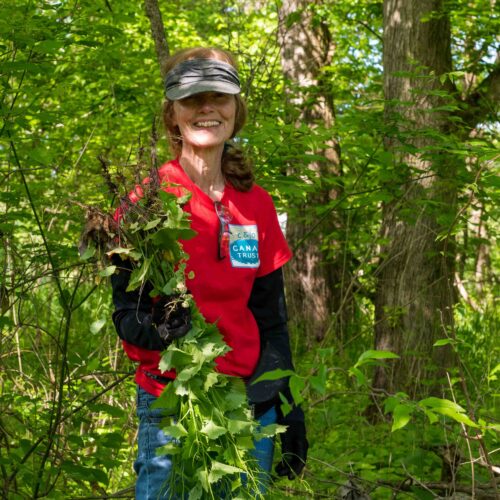About the C&O Canal
The Chesapeake and Ohio (C&O) Canal was started in 1828 as a dream of passage to Western wealth. Operating for nearly 100 years, the canal was a lifeline for communities along the Potomac River as coal, lumber, and agricultural products floated down the waterway to market. After closing due to competition from the railroads and the destruction of floods, the area languished in disrepair until it became a target for a parkway in the 1950s. Supreme Court Justice William O. Douglas rallied support for developing the canal as a linear park, and in 1971, it became a National Historical Park.
Today, the C&O Canal National Historical Park contains over 20,000 acres of historical, natural, and recreational treasures! The park annually ranks in the top 20 most visited national parks out of over 430 in the National Park System, with roughly 5 million visitors each year. Featuring a 184.5-mile towpath, spanning from Georgetown, in the District of Columbia, to Cumberland, in western Maryland, the park is popular with hikers and bikers, as well as paddlers who enjoy the neighboring Potomac River and its offshoots. With opportunities to learn about rare and threatened species of plants and animals, over 1,000 historic structures, and a rich history of native cultures, transportation growth, and Civil War conflict, the park has something to offer everyone!
The C&O Canal Trust, as the official philanthropic partner for the C&O Canal, works closely with National Park Service staff to assist in maintaining the historic, natural, and recreational treasures in the park so they will be here for future generations to enjoy.

Within its 20,000 acres, the C&O Canal tells the story of 19th and 20th-century America. It protects, of course, what was once an active transportation link between the coalfields of the Allegheny Mountains and the urban markets at the upper reaches of the Chesapeake Bay. The significance of this connection was first appreciated by George Washington. He knew that linking the Potomac to the Forks of the Ohio (present-day Pittsburgh) would connect the young, coastal nation to the vast resources of the continental interior.
While the park provides an unparalleled glimpse into the history of the canal era, it is also a repository of the history of Native Americans, the Civil War and slavery, westward expansion, immigration, industrial development, the New Deal, and the conservation movement. All are important elements of the American experience.
Within the park, there are over 1,300 historic structures in various states of repair. Floods, neglect, and even looting have taken their toll over the years. Even so, fully 5 percent of all historic structures within the entire National Park System are located in the C&O Canal National Historical Park.
Explore the history of the park through our interactive timeline below.

Today, the C&O Canal is used by millions of visitors who come to explore its incredible resources and unparalleled recreational opportunities. Visitors of all ages come to the park to stroll, hike, bicycle, birdwatch, paddle, rock climb, ski, skate, or otherwise enjoy the natural corridor provided by the canal and towpath.
The preservation of this linear riverside park is remarkable with numerous connections to other trails and paths including the Capital Crescent Trail, the Potomac Heritage National Scenic Trail, the Appalachian Trail, the Western Maryland Rail Trail, the trail system in Green Ridge State Forest, and the Great Allegheny Passage that connects Pittsburgh, Pennsylvania, to Cumberland, Maryland.
Plan your next trip to the C&O Canal and recreate your way.

The park is home to one of the East Coast’s biodiversity “hotspots”: the Potomac Gorge. The Gorge is home to over 1,500 species, including nearly 200 that are listed as rare, threatened, or endangered. The ecological health and wealth of the river corridor is only possible by virtue of the park.
In addition, as a model of a largely intact riparian (riverside) forest buffer, the canal provides an incomparable scenic amenity to the people of the region. Potomac Conservancy has long called the Potomac River the “wildest urban river in the world” thanks to the abundance of trees found up and down the river corridor. Both Scenic Maryland and Scenic America have identified the Potomac River corridor and the C&O Canal as a scenic treasure requiring constant public vigilance to protect it from potential encroachments.
Top Photo by Mark Crilley
